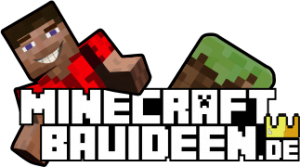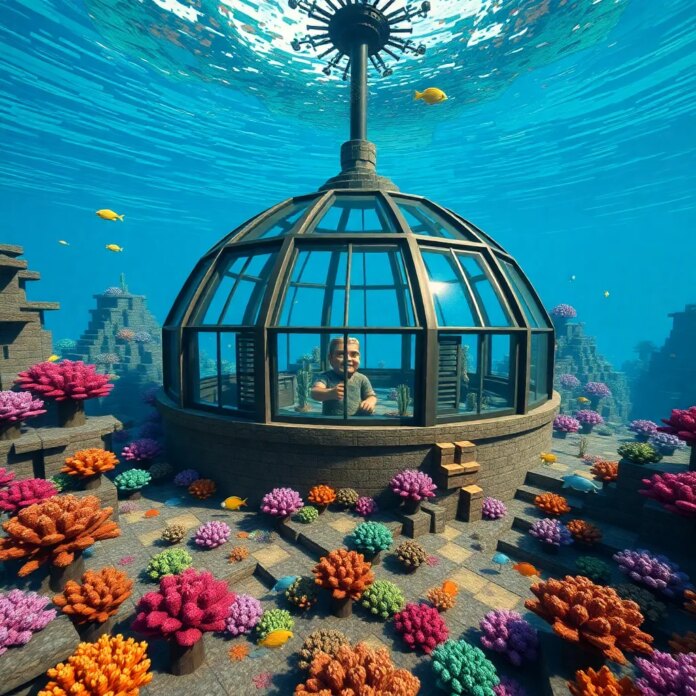The fascination of underwater observatories in Minecraft
Dive into the fascinating world of underwater observatories in Minecraft and discover the secrets of the deep sea! These impressive structures offer players the opportunity to observe the diverse marine life up close without getting wet. As Minecraft continues to evolve, underwater observatories offer an exciting way to combine creativity and exploration in the virtual world.
Planning and site selection
Before you start building your underwater observatory in Minecraft, it is crucial to choose the ideal location. Look for an area with an interesting underwater landscape, such as coral reefs, shipwrecks or underwater caves. The more diverse the environment, the more exciting your research station will be.
Choosing the right water depth also plays an important role. An observatory at medium depth offers a good view of various marine life, while a station in the deep sea opens up unique observation opportunities, but also poses greater challenges during construction. Also pay attention to proximity to resources. Regions with abundant rocks, crystals or rare minerals can facilitate future construction projects and increase the diversity of observable marine fauna.
You should also consider the geographical location of your observatory. A location close to biomes such as the warm ocean or the deep sea increases the diversity of marine life and offers a variety of research approaches. Also plan accessibility for future expansions or expeditions so that you can adapt your observatory flexibly.
Materials and construction
To build your underwater observatory, you need waterproof materials that are both functional and aesthetically pleasing. Glass is essential to provide a clear view of the underwater world. Complement the structure with sturdy blocks such as Prismarin or sea lanterns, which are not only stable but also fit well thematically and create a maritime atmosphere.
Start with the foundation of your observatory. Lay a solid base of waterproof blocks and work your way up. Plan generous windows to allow an optimal view of the surroundings. Also consider the placement of airlocks and access points to facilitate entry and exit. A well-designed structure prevents water leaks and ensures a safe environment.
Sea lanterns or glowstones are ideal for lighting. They not only ensure good illumination of the interior, but also create an atmospheric underwater mood. Supplement the lighting with redstone-controlled systems to automatically control light sources and ensure energy-efficient lighting.
Sustainable construction is also important. Use renewable energy sources such as hydropower or solar energy to minimize your ecological footprint and increase the independence of your observatory. By integrating solar panels and water wheels, you can ensure a self-sufficient energy supply.
Interior design and functionality
Set up your observatory appropriately to create an efficient research facility. Install workstations for marine research, such as workbenches, ovens and brewing stands. Storage systems for collected samples and resources are also important to advance your research. Don't forget to set up areas for regeneration, such as sleeping quarters and a kitchen, to enable long-term expeditions.
For an authentic research experience, you can set up special areas for different marine creatures. Aquariums with tropical fish, tanks for octopuses or even an area for breeding corals can turn your observatory into a real center of marine biology. These facilities not only offer added aesthetic value, but also functional benefits for your research work.
Also think about setting up communication and control rooms. Here you can collect data, monitor experiments and control your observatory. By using monitors and control panels, you can efficiently manage and analyze the collected information.
Technical aspects
Use Redstone mechanisms to automate your observatory and increase comfort. Automatic doors, lighting systems and even underwater vehicles can be integrated with a little skill. An elevator system between different levels of the observatory increases comfort and efficiency, especially if your observatory has several floors.
Safety is another important aspect of technical planning. Implement pressure equalization chambers to prevent water ingress and create emergency protocols in case of problems. Defense mechanisms against hostile creatures such as sharks or zombies should also be part of your planning. By using security devices such as automatic defense towers or motion sensors, you can protect your observatory and ensure a safe research environment.
Also consider integrating surveillance systems to monitor activity in and around your observatory. Cameras and sensors can help to detect unusual activities at an early stage and take appropriate action.
Research and exploration
Your underwater observatory is the perfect starting point for intensive marine research in Minecraft. Collect and catalog different species of fish, corals and other marine life. Conduct experiments to learn more about the underwater world and make new discoveries. Document your research results in logbooks or digital databases to track the progress of your projects.
Organize expeditions to nearby underwater structures such as sunken ships, ocean monuments or secret underwater caves. These excursions can provide valuable insights and resources that are useful for the further development of your observatory. Build underwater vehicles or diving equipment to make the exploration of difficult areas easier and more efficient.
Use the variety of marine biomes in Minecraft to start different research projects. From the study of deep-sea creatures to the exploration of coral reefs, the underwater world offers numerous opportunities for exciting discoveries and innovative construction projects.
Ecological aspects
Use your observatory to study and protect the ecology of the Minecraft seas. Set up areas for the rehabilitation of injured marine animals or start projects to reforest coral reefs. Through such measures, you contribute to the preservation of the underwater world and promote the sustainable use of resources.
Implement sustainable practices in your observatory. Use renewable energy sources such as hydropower or solar energy to minimize your environmental footprint. Avoid over-extracting resources and use recycling systems to use materials efficiently and reduce environmental impact.
Promote biodiversity in your observatory by creating different habitats for different marine life. Create areas with diverse plants and corals to simulate a natural environment and support the diversity of marine fauna. These measures not only contribute to the ecological balance, but also provide an aesthetically pleasing environment for your research and exploration.
Multiplayer aspects and joint projects
Underwater observatories are ideal for joint projects on multiplayer servers. Organize research expeditions with other players or host guided tours of your facility. Exchange knowledge and resources and work on larger community projects such as underwater cities or marine reserves. By collaborating with other players, you can expand your observatory and benefit from their skills.
Joint building projects promote creativity and strengthen the sense of community within the Minecraft community. Work together with other players to design and implement complex structures that would be difficult to realize alone. These collaborations make it possible to create larger and more impressive observatories that can be celebrated as shared achievements.
You can also organize competitions or challenges in which players design and present their own observatories. This encourages the exchange of ideas and inspires others to start their own building projects. Such events provide a platform for creative expression and recognition of outstanding building work within the community.
The integration of trading posts or trading centers into your observatory can also be a valuable addition. This allows you to trade rare resources or establish economic relationships with other players to further advance your research project. These trading activities promote the exchange of goods and information and strengthen the economic basis of your observatory.
Inspiration and further development
Take inspiration from real-life marine research facilities and bring innovative concepts to the Minecraft world. Keep an eye out for new updates and mods that add additional underwater features or marine life to keep your observatory up to date. Continuous development of your observatory will keep it exciting and relevant.
Experiment with different architectural styles and themes. From futuristic research stations to historically inspired underwater fortresses, the possibilities are endless. By combining different styles, you can create a unique and individual observatory that is both functional and aesthetically pleasing.
Stay open to new ideas and be inspired by other building projects. The Minecraft community offers a wealth of resources and tutorials to help you develop and improve your underwater observatory. Exchange ideas with other players, take part in workshops and visit forums to get valuable tips and suggestions.
By continuously improving and customizing your observatory, you can add new features and optimize existing structures. This ensures that your observatory keeps pace with the progress of Minecraft and always remains an impressive highlight in your world.
Increased security and trade
In addition to the advantages already mentioned, underwater observatories also offer increased security against hostile creatures such as sharks or zombies, which are often found in deep waters. Through strategic placement and the use of security measures, you can turn your observatory into an impregnable refuge. Reinforced walls, automatic defense towers and secure entrances ensure that your observatory is protected from attack.
The integration of trading posts or trading centers into your observatory can also be a valuable addition. This allows you to trade rare resources or establish economic relationships with other players to further advance your research project. Trading resources such as rare minerals, exotic fish or special building materials strengthens the economic basis of your observatory and enables you to finance further construction projects.
By combining research, trade and security, your underwater observatory becomes a multifunctional center that combines all aspects of the game and offers a rich, interactive experience.
Conclusion
Underwater observatories in Minecraft offer a unique opportunity to explore and experience the fascinating world beneath the ocean's surface. They combine creative building with exploration and science, giving players new perspectives on the diversity of the game. Whether you are a lone ocean explorer or part of a larger underwater community, your observatory will become a center of discovery and innovation.
With careful planning and creative execution, you can create an impressive structure that is both aesthetically pleasing and functional. The integration of security measures, trade centers and ecological projects ensures that your observatory is not only a place of research, but also a lively center of community and exchange within the Minecraft community.
In addition to the aesthetic and functional benefits, underwater observatories also offer increased security from hostile creatures and enable economic activity through the trading of resources. Through continuous maintenance and expansion, your underwater observatory will not only become an impressive structure, but also a vibrant center of research and exchange.
Dive into this exciting challenge and create your own underwater paradise in Minecraft. The secrets of the deep sea are waiting to be discovered by you!





